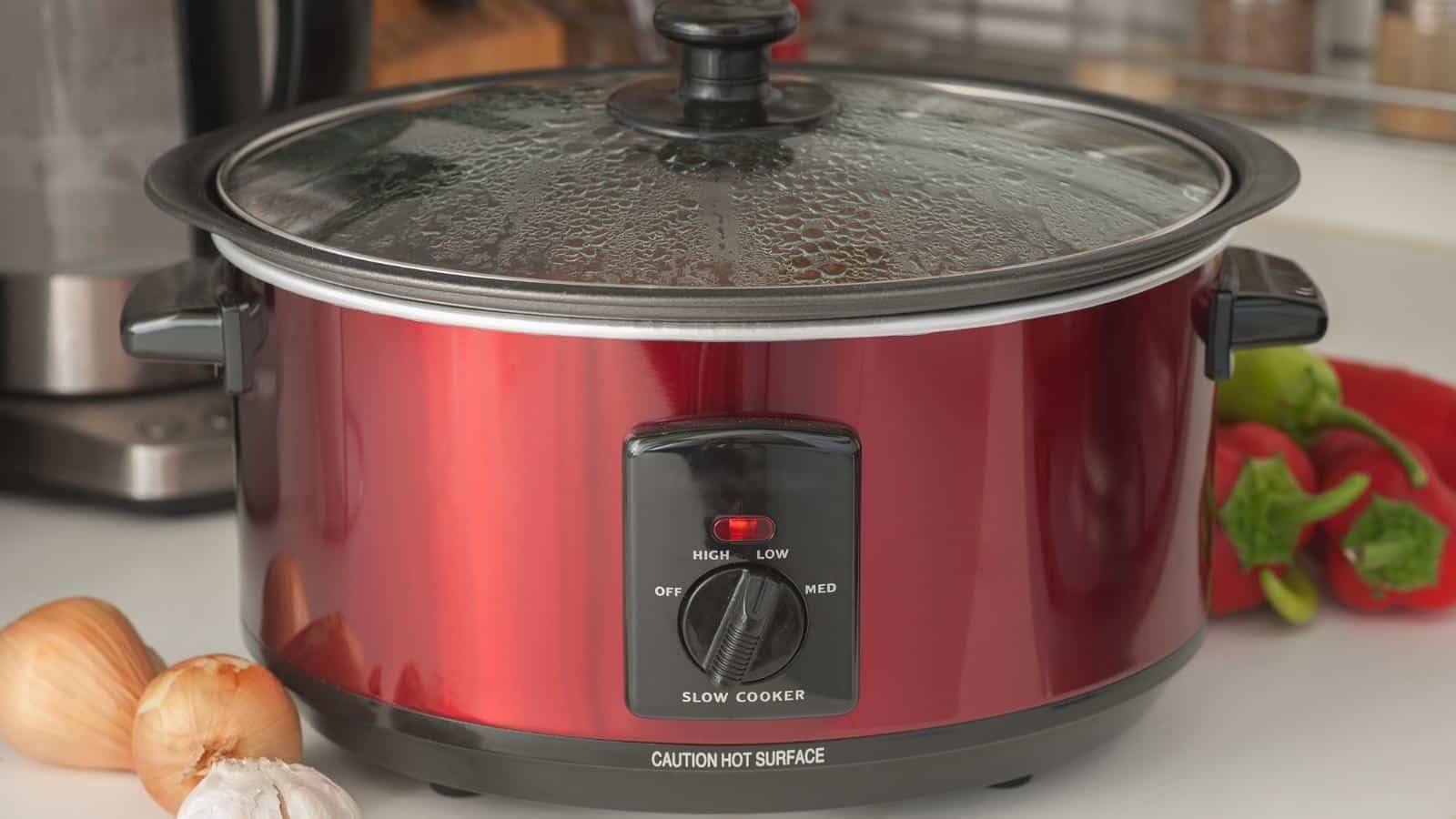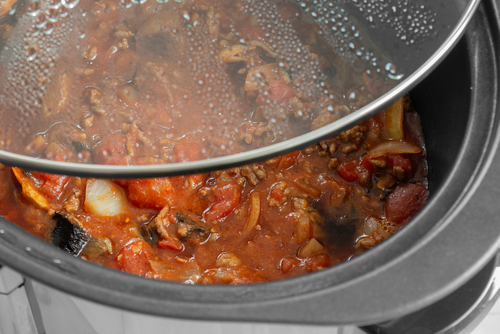
Slow cookers, as the name implies, cook food slowly. It’s this long, slow cooking that tenderizes cheaper cuts of meat and makes them fall-apart tender.
You can just brown your meat and onions, throw everything into the cooker in the morning, then go on with your day and forget about it until it’s time for dinner.
There’s nothing better than coming home from a busy day to a hot meal that’s ready to eat, right?
However, as simple as slow cookers are, there are a few basic rules that you need to follow if you want tender, tasty, well-cooked food that’s safe to eat and simmers gently to delicious perfection.
Many people worry that their slow cooker doesn’t seem to be boiling properly. We’ll troubleshoot and give you a few reasons for this here.
Why is my slow cooker not boiling the food?
Most newer slow cookers come with about 3 heat settings – keep warm, low, and high. What these temperatures actually are depends on the model.
Usually, keep warm is about 167˚F (75˚C), low is around 190˚F (88˚C) while high is around 300˚F (149˚C). You can see from these temperatures that keep warm and low are below boiling point.
This is why you will not see the liquid bubbling.
Reasons Why Slow Cooker Not Boiling
1. Set on the wrong setting
As we’ve said, the keep warm and low settings both provide temperatures below boiling point. The keep warm setting is not intended to cook food, but simply to keep your food warm after it has been cooked.
The low setting (best for long, slow tenderizing of meat) will create a slow, gentle simmer after a few hours.
So if you notice your food not boiling, we advise you to check the temperature control knob. If it’s set to keep warm, change it to low or high.
Slow cookers are fairly basic appliances. You can cook on high or low — there’s no in-between. So what’s the best choice for tender, tasty slow-cooked meals? Well, less is more.
Using the high setting on your slow cooker can ruin your dish. For instance, if you’re doing a stew with chunks of meat in it, using the high setting will boil the meat, dry it out, and cause it to fall apart.
However, cooking it on low for a longer time will melt the connective tissue and tenderize the meat beautifully.
According to the crockpot manufacturers, the difference between the two settings isn’t primarily a higher temperature, it’s the time it takes for the slow cooker to reach the simmer point.
On high, that’s about three hours, and on low, it takes about seven hours. This means that if your supper is cooking on high all day while you’re at work, it will have been simmering for three hours longer than necessary.
Assuming you have the time, go low!
2. Lifting your lid
No matter whose recipe it is that you are following, lifting the lid is always considered a bad move when cooking with a slow cooker. Slow cooker settings, low and high work on a principle of building temperature.
The crockpot builds temperature over time without increasing it. This kind of slow and gradual temperature increase is what keeps the meat juicy and tenderizes it.
We understand the temptation to lift the lid and have a quick look at whatever it is that’s smelling so good inside the pot. Perhaps you want to give it a stir. This is the worst thing you can do.
It took your crockpot longer than you might think to get up to the target temperature. Raising the lid for even a second lets out most of the hot air and steam that’s built up.
This reduces the overall temperature inside the appliance, and more time will be needed for the dish to cook. Every time you lift the lid, you add about half an hour to the time you need to cook the food!
Therefore, the reason your dish isn’t boiling or simmering could be that someone has lifted the lid one too many times. If the lid does get raised, say to add pasta or herbs towards the end, be sure to add some extra cooking time on.
3. Filling the slow cooker too much
It is important only to fill the appliance to the recommended level. It should never be more than three-quarters full, preferably half full.
If you consistently need to fill it more than this, perhaps you need to invest in a bigger slow cooker for the size of your family.
If it is too full, the food will take a very long time to get to the right temperature so this is another reason why your food may not be boiling or simmering.
4. Faulty components
Lastly, your slow cooker may not be simmering because of an electrical problem. The thermostat is the component that maintains the temperature at a particular level. The heating element is what provides the heat.
If one or both of them is not working as it should, your dish will not boil. If the thermostat gets stuck on keep warm, for instance, then no matter what you do, the food will not simmer.
If you suspect an electrical issue, contact customer service and ask them for a replacement if your appliance is still under warranty or take it to an electrician for repair.
We hope our simple guide has helped you to work out what the problem with your slow cooker is. Good luck!



